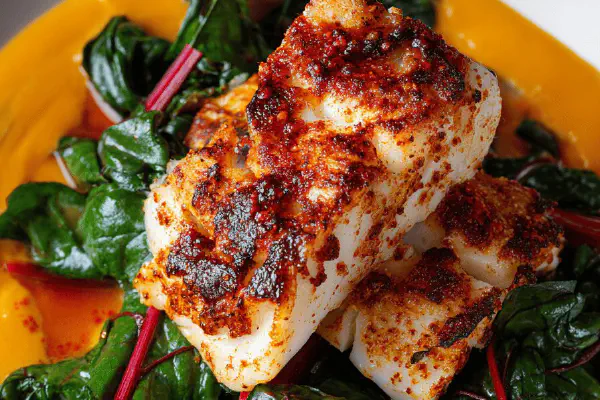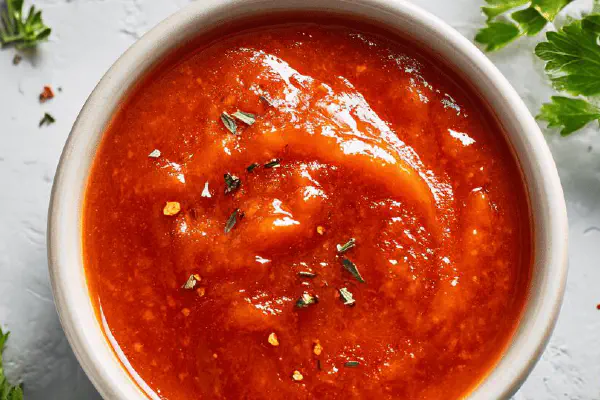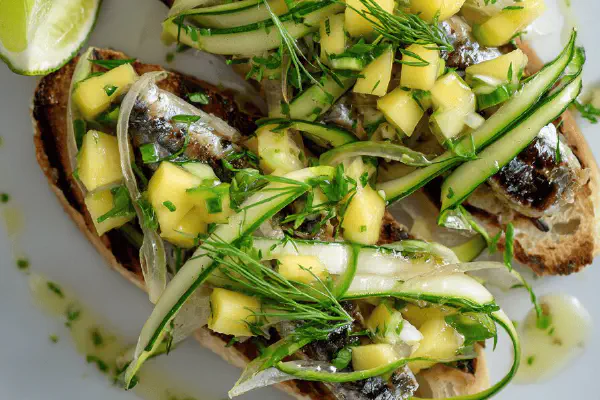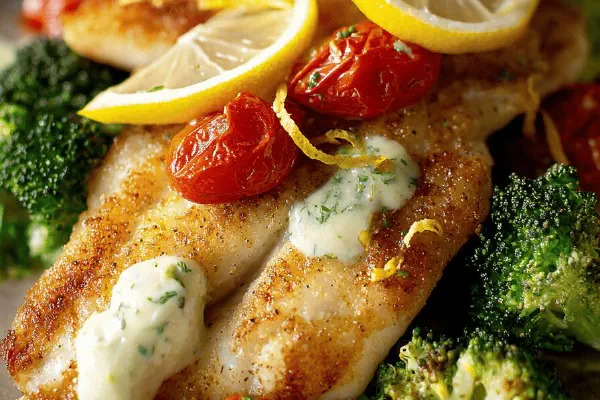Seared Halibut with Mushrooms and Greens
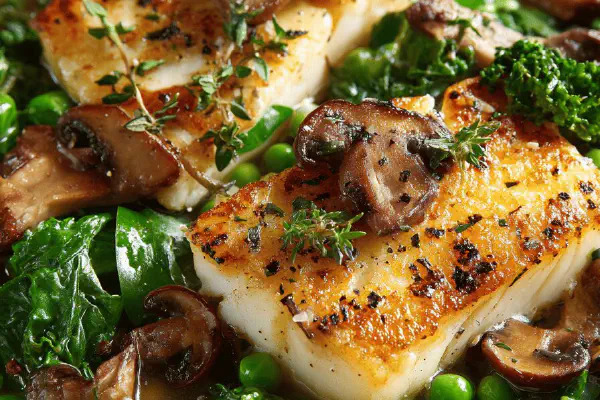
By Emma
Certified Culinary Professional
Ingredients
- 4 halibut fillets about 140 g each
- 25 ml olive oil
- 20 g unsalted butter
- 180 g shiitake mushrooms sliced
- 150 ml low sodium vegetable broth
- 250 g frozen peas thawed
- 150 g baby kale
- fleur de sel optional
About the ingredients
Method
- Heat a large nonstick skillet over medium-high. Add half the olive oil and gently sear halibut fillets flesh side up for 3 mins until lightly browned. Salt and pepper. Add butter and cook, swirling pan until butter turns golden hazelnut color. Remove fish, place brown side up on plate. Spoon browned butter over.
- Wipe skillet, add remain olive oil, and increase heat to high. Toss in sliced shiitake mushrooms. Sprinkle salt and pepper, sauté 4 mins until softened and browned. Pour in vegetable broth, add peas and place halibut back, brown side up. Bring to boil then reduce to simmer 2-3 mins till fish is opaque and peas tender. Remove fish again.
- Add baby kale leaves to hot broth and stir until just wilted, about 1-2 mins. Taste. Adjust salt if needed.
- Divide greens and peas onto plates. Place halibut atop. Scatter fleur de sel over fish if using. Serve hot.
Cooking tips
Chef's notes
- 💡 Sear fish flesh side up first. Keeps surface browned, skin side down can stick or tear if thin. Three minutes enough to get light color on 140g fillet. Use medium-high heat not too hot. Adds texture but prevents burning. Butter added after initial sear browns fast. Watch carefully, swirl pan. Nutty brown butter forms quickly and burns fast over high heat.
- 💡 Wipe skillet before mushrooms. Avoid leftover residues mixing flavors. High heat for mushrooms gives good caramelization, deeper flavor. Salt and pepper early pulls moisture for browning. Broth added to deglaze, lifts browned bits. Peas added late so they don’t overcook but soften. Simmer fish again gently for just 2-3 mins, avoid drying or overcooking delicate halibut.
- 💡 Baby kale used, thicker leaf than tatsoi. Brief simmer in hot broth wilts without mush. Stir gently, about 1-2 mins only. Helps greens stay vibrant and maintain slight bite, contrasting soft peas. Taste broth after adding greens, adjust salt if needed. Small pinch of fleur de sel on fish optional. Adds crunch and finishing texture contrast.
- 💡 Butter reduced to 20g keeps richness without greasy feel. Halibut portion sized at 140g allows precise cook timing. Mushrooms sliced evenly for uniform cooking. Frozen peas convenient, add bright color and sweetness. Vegetable broth lighter than chicken, lowers overall sodium naturally. Olive oil split to control pan fat level when cooking fish then mushrooms separately.
- 💡 Finish plating with greens and peas first. Halibut set on top to prevent sogginess below. Spoon browned butter over fish just before serving. Warm plates help maintain temperature but avoid resting fish too long. Fish removed twice ensures even doneness but needs quick moves to keep hot. Timing critical, work prep steps ahead like thawing peas and slicing mushrooms early.
Common questions
Can I use other fish besides halibut?
Yes but timing changes. Thicker fillets need longer sear. Thinner may need less than 3 mins. Adjust simmer based on fish opacity. White firm fish works best. Avoid oily or flaky types. Texture differs, so watch closely.
What if no vegetable broth?
Water plus spices works but flavor flat. Add herbs, maybe garlic or onion powder. Mushroom broth alternate for umami boost. Low sodium broth preferred to control salt at end. Avoid salty store brands if adjusting seasoning yourself.
How to store leftovers?
Refrigerate fish and veggies separately if possible. Combine before reheating. Use airtight containers. Best eaten within 1-2 days for texture and freshness. Reheat gently; microwave or pan with lid, low heat. Avoid overcooking pea and kale—turn mushy fast.
Can I make this dairy-free?
Butter is key flavor but can swap with vegan butter or more olive oil. No lactose raises slight flavor shift, less nutty. Browning vegan butter requires careful watch; burns quicker. Adds different mouthfeel, experiment with small batch first.
